Breaking down the Microsoft and Samsung partnership
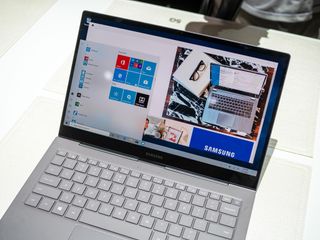
Last week, Microsoft announced big news alongside Samsung; a partnership that will see the two companies work closely together on future products, starting with the Galaxy Note 10. This is a huge deal for Microsoft and a big step back into the mobile game. But this partnership isn't just about mobile; it's about Windows too.
Samsung has been happily bundling some of Microsoft's Android apps on its phones for a couple of years now. It started with the Samsung Galaxy S8, but there was never any formal partnership behind it. Now that there's an official public-facing partnership to contend with, both Microsoft and Samsung have taken this bundling of apps to a new level by introducing more Microsoft services that are preinstalled and going a step further by integrating some of those services with Samsung's version of Android.
Microsoft apps preinstalled
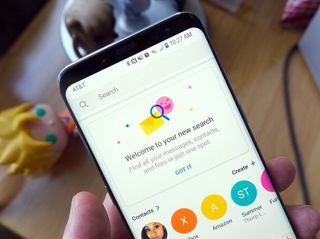
The following are all the Microsoft apps you can expect to see bundled with the Galaxy Note 10, and likely future Galaxy S and Note devices going forward.
- Word
- PowerPoint
- Excel
- Outlook
- OneDrive
- Your Phone Companion
Just like with previous Samsung smartphones (in some regions,) Microsoft Office will continue to be bundled with the Galaxy Note 10. This bundling includes Word, PowerPoint, and Excel. What's different this time is that a fourth Office app is now included in the bundling with the device: Outlook for Android. This inclusion is a big deal, as it means users will have the option of using Outlook as their default email client right out of the box.
There's also the OneDrive app, which lets users back up their photos, videos, and documents to their Microsoft Account for viewing across other devices that support OneDrive. In addition to this, there's also the LinkedIn app, Microsoft's social network for professionals looking to share work-related achievements, news, and job openings.
The last Microsoft app to be bundled with the Galaxy Note 10 is Your Phone Companion, the app that lets users sync their phone's notifications, photos, and SMS with their Windows 10 PC. Just like with iMessage on a Mac and iPhone, users will be able to chat with contacts via SMS straight on their PC without needing to pick up their phone.
There's also the screen sharing feature, which displays your phone's screen right on your PC for when you want to interact with your device without picking it up. Microsoft says this keeps you more productive by not breaking your workflow whenever a notification comes in. Microsoft has also announced that users will be able to make and receive cellular phone calls via the Your Phone app on Windows 10 later this year.
Be an expert in 5 minutes
Get the latest news from Android Central, your trusted companion in the world of Android
Tighter Microsoft integration

In addition to bundling Microsoft apps, this partnership takes things a step further by integrating some of Microsoft's services into the actual OS experience. This starts with Your Phone, which on the Galaxy Note 10, is integrated with the quick actions area in the notification center. It provides quick and easy access to the Your Phone service, and tapping on it will initiate the connection between your phone and PC.
This integration should put Your Phone in front of more people, especially those who usually uninstall extra apps they don't think they need. Having it tied into the quick actions area may convince more people to set it up and give it a go, especially if they have a Windows PC lying around. Helping that happen: in the quick actions area, it's labeled as "Link to Windows" and not Your Phone Companion.
There's also OneDrive integration inside the Samsung Gallery app. This feature allows users to automatically backup and view their OneDrive photos from within Samsung's own Gallery experience instead of being required to do it all through the dedicated OneDrive app. This should make the overall photos backup experience much more streamlined. Being able to view photos stored in OneDrive directly in the gallery app is an excellent addition that may be able to rival Google Photos.
Microsoft is also adding additional experiences and capabilities to the Outlook app. For example, Microsoft is building out support for the Galaxy Note pen, enabling additional functionality such as being able to peek at emails in your inbox by hovering over them with the pen and replying to emails by inking instead of typing.
New Windows devices and experiences

The Microsoft and Samsung partnership isn't just about Android. Microsoft is now working closely with Samsung on other products, including new Windows PC hardware, starting with the Galaxy Book S. This is the first Snapdragon 8cx powered Windows 10 device to go on sale and should hopefully pave the way forward for Windows 10 on ARM in the future.
Samsung's Galaxy Book S is a premium laptop, which starts at a relatively acceptable price of $999. The Snapdragon 8cx is worthy of this price tag, as its performance is purported to be around the same as an Intel Core i5. Considering how slim and premium the laptop itself is, $999 for this device isn't bad at all. Plus, it has USB-C ports which means you can plug in your new Galaxy Note 10 without a dongle.
Samsung has also built out a new dedicated DeX application for Windows 10 that allows Galaxy users to use their DeX environment without needing a dedicated DeX dock. Now, every Windows 10 PC is a DeX dock, and the only requirement is a USB-C cable to plug into both your phone and Windows 10 PC.
A better retail experience in Microsoft Stores
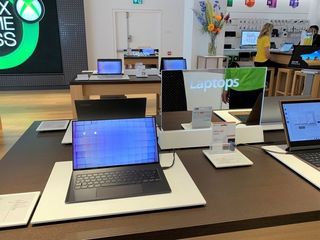
Microsoft's and Samsung's partnership extends to Microsoft's physical and online stores as well. You'll be able to buy Samsung devices direct from Microsoft. And in stores, you will find Galaxy devices advertised alongside Surface products as first-class citizens for the Microsoft ecosystem. If you're in a Microsoft Store and want a new phone to go along with your Surface, Microsoft will recommend you a Samsung Galaxy. That's the phone that Microsoft thinks will best serve the customer for Microsoft software and services on the go.
It's fair to say that for now, Microsoft considers the Samsung Galaxy S and Note line as the new Windows phones. If you're part of the Microsoft ecosystem, as Samsung Galaxy S or Note device is what Microsoft thinks you should be getting.
The future
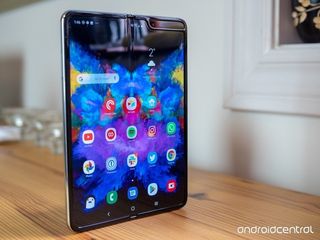
So that's all the announcements from the partnership so far, but what about the future. I wouldn't be surprised if this partnership has only just begun, and to expect more products from Samsung and Microsoft in the future to be tied at the hip. One area that I'm particularly interested in is what this all means for Microsoft's own Windows Lite effort, and foldable PCs in the future. Can we expect a larger, PC orientated Galaxy Fold that runs Windows Lite next year? Will Microsoft and Samsung be working together on any Windows Lite hardware? We'll have to wait and see.
The Galaxy Book S would have been a perfect contender for Windows Lite. But since it's not ready yet it makes sense for it to be shipping with Windows 10. I can't imagine this partnership doesn't include hardware with Windows Lite in the future. We could also see a newer Windows Mixed Reality headset, or maybe Cortana and Bixby integration like how we've witnessed Cortana and Alexa integrate.
Over to you
What are your thoughts on the Microsoft and Samsung partnership? Do you expect Samsung to come out with a Windows Lite device at some point? Let us know in the comments.
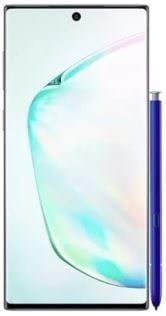
Samsung's latest Galaxy Note phone
These powerful smartphones feature an impressive amount of internal storage and come with a pair of USB-C headphones. The S Pen gives you more control with handwritten notes, air gestures, and photo editing.

